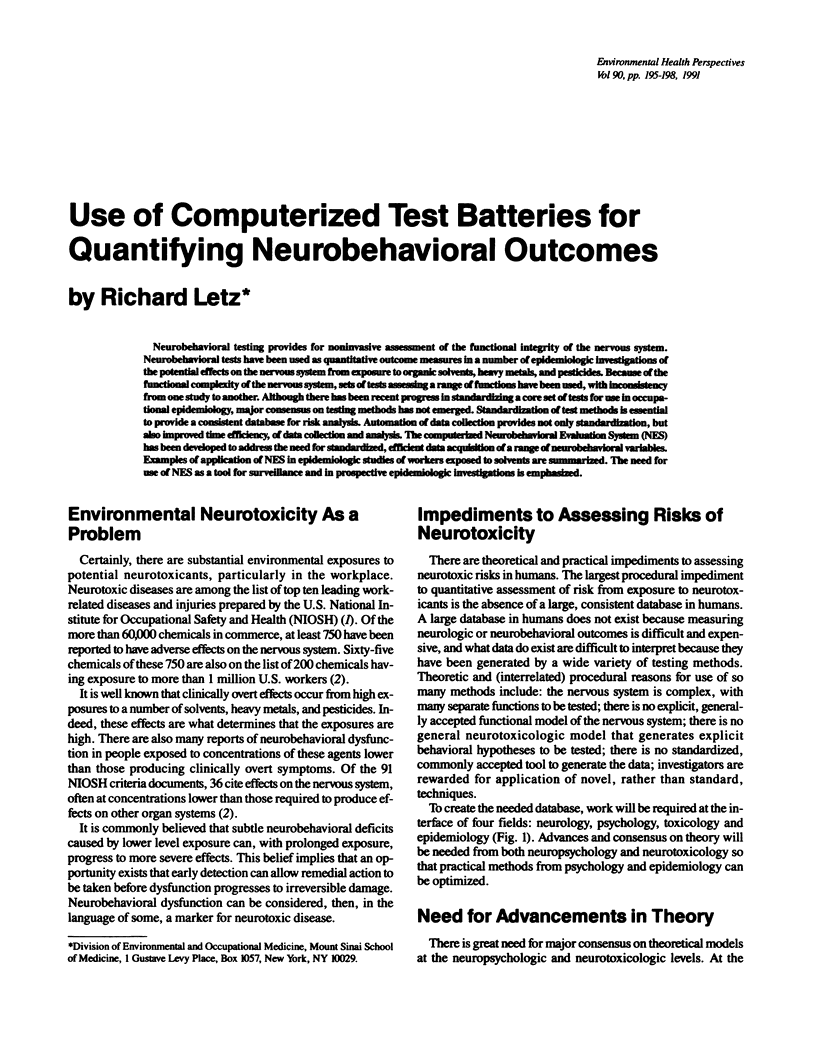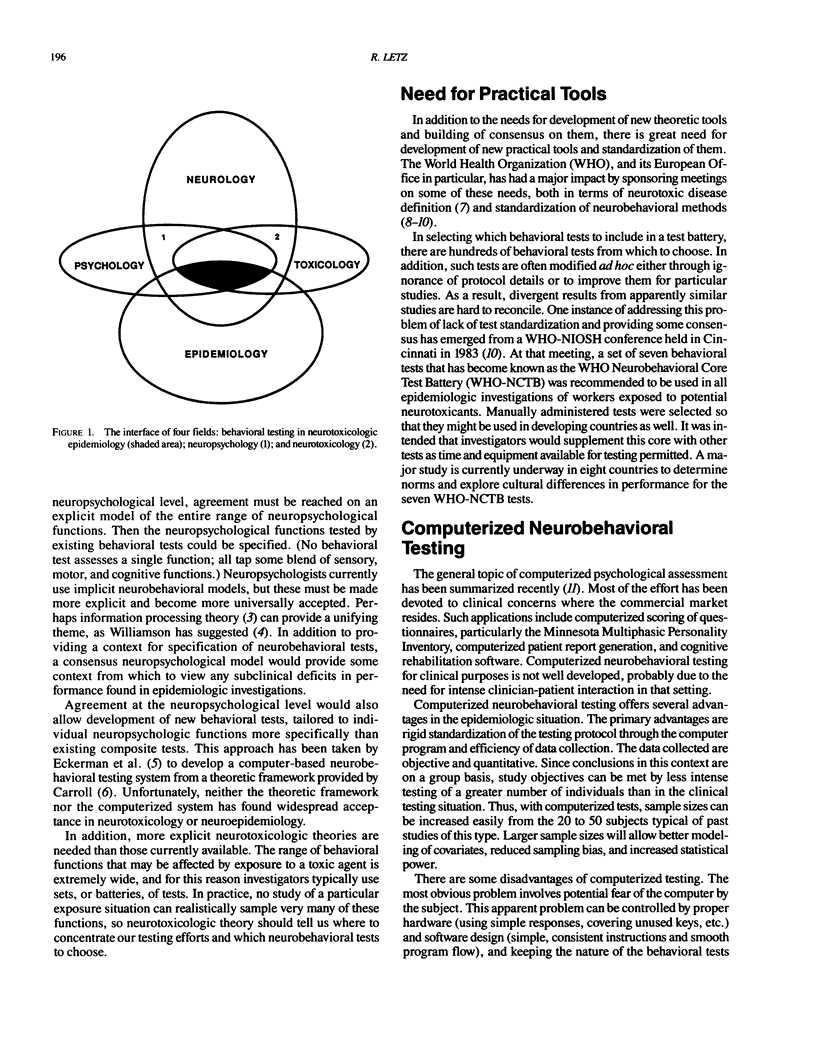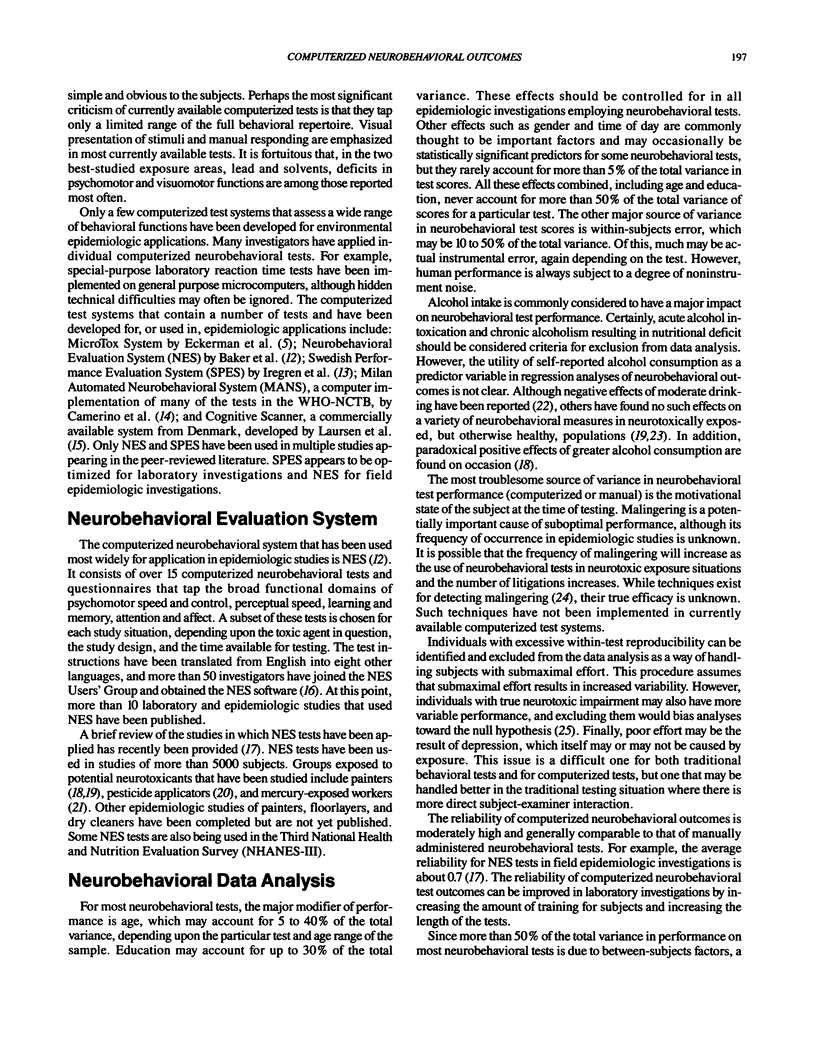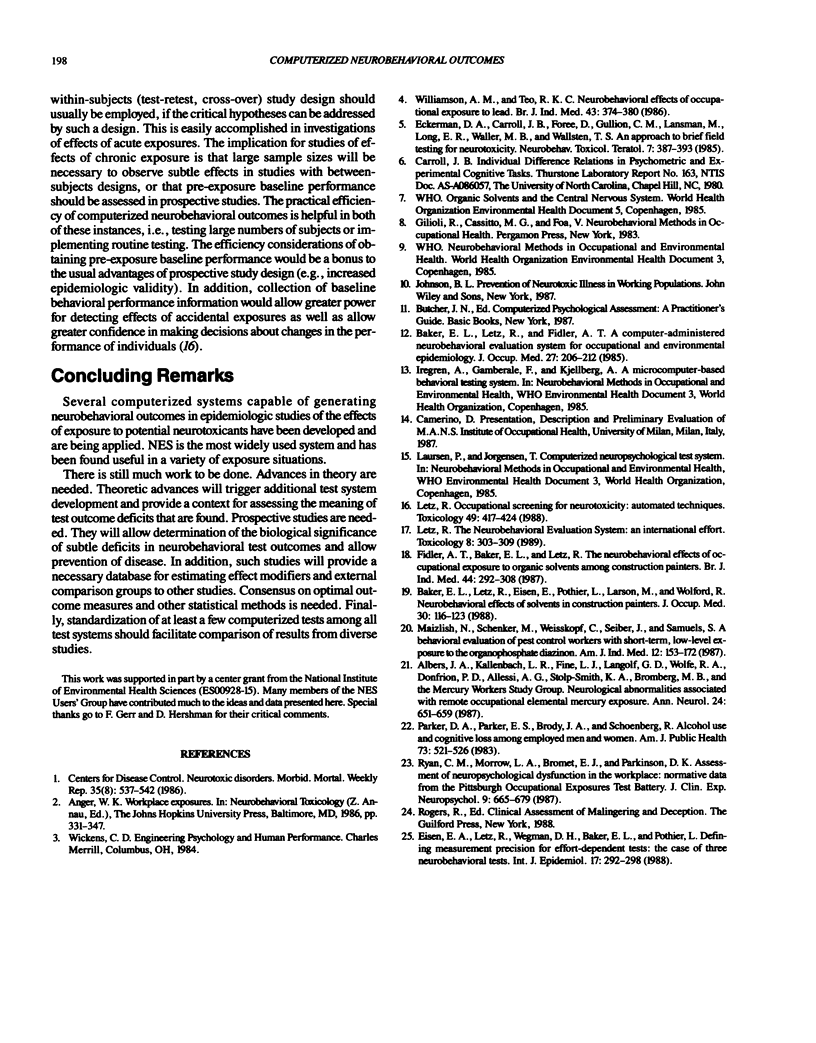Abstract
Neurobehavioral testing provides for noninvasive assessment of the functional integrity of the nervous system. Neurobehavioral tests have been used as quantitative outcome measures in a number of epidemiologic investigations of the potential effects on the nervous system from exposure to organic solvents, heavy metals, and pesticides. Because of the functional complexity of the nervous system, sets of tests assessing a range of functions have been used, with inconsistency from one study to another. Although there has been recent progress in standardizing a core set of tests for use in occupational epidemiology, major consensus on testing methods has not emerged. Standardization of test methods is essential to provide a consistent database for risk analysis. Automation of data collection provides not only standardization, but also improved time efficiency, of data collection and analysis. The computerized Neurobehavioral Evaluation System (NES) has been developed to address the need for standardized, efficient data acquisition of a range of neurobehavioral variables. Examples of application of NES in epidemiologic studies of workers exposed to solvents are summarized. The need for use of NES as a tool for surveillance and in prospective epidemiologic investigations is emphasized.
Full text
PDF



Selected References
These references are in PubMed. This may not be the complete list of references from this article.
- Albers J. W., Kallenbach L. R., Fine L. J., Langolf G. D., Wolfe R. A., Donofrio P. D., Alessi A. G., Stolp-Smith K. A., Bromberg M. B. Neurological abnormalities associated with remote occupational elemental mercury exposure. Ann Neurol. 1988 Nov;24(5):651–659. doi: 10.1002/ana.410240510. [DOI] [PubMed] [Google Scholar]
- Baker E. L., Letz R. E., Eisen E. A., Pothier L. J., Plantamura D. L., Larson M., Wolford R. Neurobehavioral effects of solvents in construction painters. J Occup Med. 1988 Feb;30(2):116–123. [PubMed] [Google Scholar]
- Baker E. L., Letz R., Fidler A. A computer-administered neurobehavioral evaluation system for occupational and environmental epidemiology. Rationale, methodology, and pilot study results. J Occup Med. 1985 Mar;27(3):206–212. [PubMed] [Google Scholar]
- Eckerman D. A., Carroll J. B., Foree D., Gullion C. M., Lansman M., Long E. R., Waller M. B., Wallsten T. S. An approach to brief field testing for neurotoxicity. Neurobehav Toxicol Teratol. 1985 Jul-Aug;7(4):387–393. [PubMed] [Google Scholar]
- Fidler A. T., Baker E. L., Letz R. E. Neurobehavioural effects of occupational exposure to organic solvents among construction painters. Br J Ind Med. 1987 May;44(5):292–308. doi: 10.1136/oem.44.5.292. [DOI] [PMC free article] [PubMed] [Google Scholar]
- Parker D. A., Parker E. S., Brody J. A., Schoenberg R. Alcohol use and cognitive loss among employed men and women. Am J Public Health. 1983 May;73(5):521–526. doi: 10.2105/ajph.73.5.521. [DOI] [PMC free article] [PubMed] [Google Scholar]
- Ryan C. M., Morrow L. A., Bromet E. J., Parkinson D. K. Assessment of neuropsychological dysfunction in the workplace: normative data from the Pittsburgh Occupational Exposures Test Battery. J Clin Exp Neuropsychol. 1987 Dec;9(6):665–679. doi: 10.1080/01688638708405209. [DOI] [PubMed] [Google Scholar]
- Williamson A. M., Teo R. K. Neurobehavioural effects of occupational exposure to lead. Br J Ind Med. 1986 Jun;43(6):374–380. doi: 10.1136/oem.43.6.374. [DOI] [PMC free article] [PubMed] [Google Scholar]


